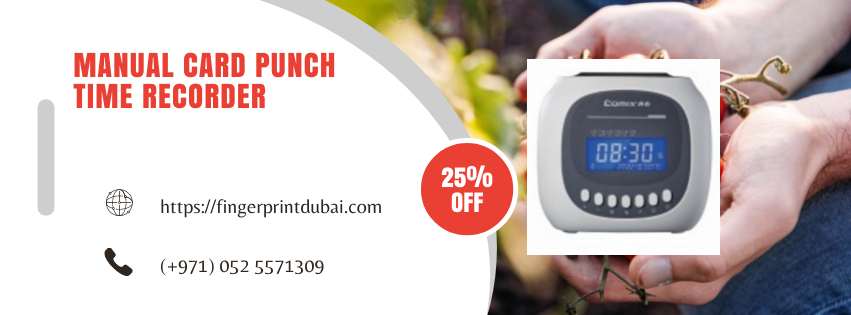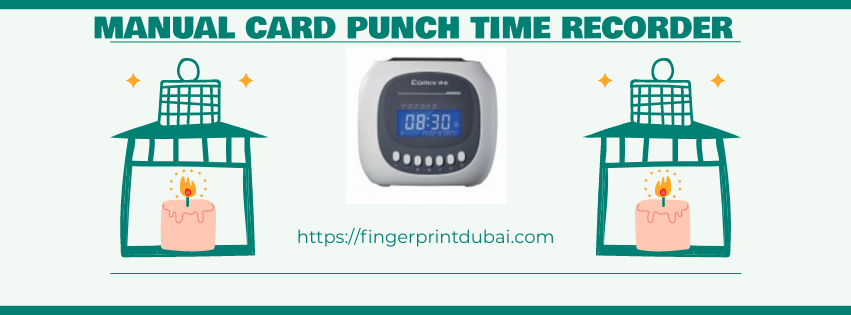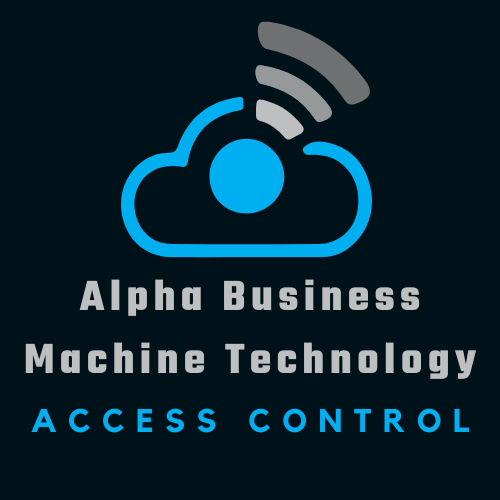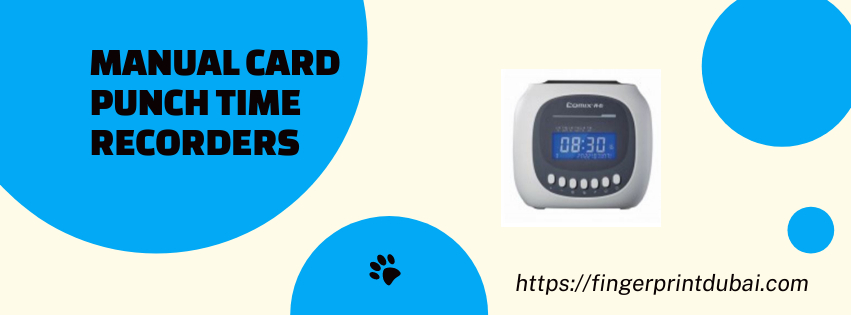Manual Card Punch Time Recorder
Why Companies are Still Using Manual Card Punch Time Recorders
Even in our hyper-digital age, some companies are still clinging to the old-school method of tracking employee time: the manual card punch time recorder.

Let’s dive into the reasons behind this seemingly outdated practice:
-
Bundy Clock Cost-Effectiveness:
Initial Investment: Manual card punch systems have a significantly lower upfront cost compared to modern electronic time and attendance systems. Maintenance: These systems are incredibly low-maintenance.2 No complex software to install, no IT support needed, and minimal risk of technical glitches.
-
Time Clock Simplicity and Reliability:
Easy to Use: Employees simply punch their cards in and out. No complicated logins, passwords, or biometric scans to deal with. This simplicity minimizes training time and reduces the risk of user error. Proven Track Record: These systems have been around for decades and have a proven track record of reliability. They are less prone to data corruption or system failures.
-
Time Card Punching Data Security:
Reduced Cyber threats: With no digital component, manual card punch systems are virtually immune to cyberattacks, data breaches, and hacking attempts. Physical Security: Time cards can be stored securely in locked cabinets, providing an extra layer of physical security for employee time data.
-
Attendance Register Employee Buy-in:
Familiar and Comfortable: Many long-time employees are familiar and comfortable with using card punch systems. Introducing new technology can sometimes lead to resistance and lower employee morale. Reduced Anxiety: Some employees may feel uncomfortable with the use of biometric data or the potential for electronic surveillance.4 Manual card punch systems offer a more traditional and less intrusive approach.
-
Integration with Existing card punching Systems:
Minimal Integration Required: In some cases, integrating a manual card punch system with existing payroll software can be relatively straightforward, especially for smaller businesses. Companies using Manual Card Punch Time Recorders have long relied on this traditional method for tracking employee hours. These simple yet effective devices continue to play a crucial role in many workplaces, offering unique advantages that modern digital systems sometimes can’t match. Let’s explore the reasons why businesses still opt for Manual Card Punch Time Recorders in today’s fast-paced world.

Simplicity and Reliability & Easy to Use
Manual Card Punch Time Recorders are incredibly straightforward. Employees can quickly clock in and out with a simple swipe of a time card, making the process hassle-free and efficient. This simplicity ensures that even employees who aren’t tech-savvy can use the system without difficulty.
Low Maintenance Ribbon Cartridge
Unlike complex digital systems, Manual Card Punch Time Recorders require little upkeep. This means fewer technical issues and less time spent on system maintenance, allowing businesses to focus on their core operations.
Cost-Effectiveness Affordable Initial Investment
For small businesses, Manual Card Punch Time Recorders offer a cost-effective solution for time tracking. The initial investment is relatively low compared to sophisticated digital time tracking systems.
Reduced Ongoing Ribbon Expenses
With no need for software updates or IT support, companies can save on long-term operational costs. This makes Manual Card Punch Time Recorders an attractive option for budget-conscious organizations. Tangible Records
Physical Evidence Bundy Clock
Manual Card Punch Time Recorders provide tangible, physical time cards that serve as concrete evidence of employee hours. These physical records can be crucial in resolving disputes or audits, offering a clear paper trail.
Easy Storage Time Recorder Ribbon
Time cards can be easily filed and stored for future reference, providing a simple archiving system. This physical storage can be particularly useful for businesses that prefer traditional record-keeping methods.
Enhanced Employee Accountability Visible Tracking
The act of physically punching a time card can increase employee awareness of their work hours. This visibility can lead to improved punctuality and a greater sense of responsibility among staff members.
Deterrent to Time Theft

Manual Card Punch Time Recorders can help deter “buddy punching” and other forms of time theft. The physical nature of the system makes it more difficult for employees to manipulate their work hours.
Compliance with Labor Law & Accurate Documentation
ABM INNOVATIVE FZE manual Card Punch bundy clock Time Recorders help businesses maintain date wise accurate records of employee work hours, which is crucial for compliance with labor laws. These systems provide a reliable method for documenting overtime, breaks, and total hours worked.
Audit-Ready Records
In case of labor audits, companies using Manual Card Punch Time Recorders have readily available, tamper-resistant records. This can be invaluable in demonstrating compliance with wage and hour legislation.
Independence from Technology No Internet Required
Unlike digital time tracking systems, Manual Card Punch Time Recorders don’t rely on internet connectivity. This makes them ideal for businesses in areas with unreliable internet or those concerned about system downtime.
Power Outage Resistant
Many Manual Card Punch Time Recorders come with battery backups, ensuring continuous operation even during power outages. This feature is particularly valuable for businesses that operate around the clock.
Psychological Benefits Sense of Tradition
For some employees, the act of punching a physical time card provides a satisfying, tangible start and end to their workday. This traditional method can contribute to a positive work culture and a sense of routine.
Clear Work-Life Boundaries
The physical act of punching in and out can help employees mentally separate their work and personal time. This clear delineation can contribute to better work-life balance and employee satisfaction.
Time is a precious commodity in the business world, and keeping accurate records of employee hours is crucial for ensuring fair compensation and compliance with labor laws. Manual card punch time recorders have been a popular tool for companies looking to track employee work hours for decades. Despite the availability of more advanced digital time tracking systems, many companies continue to rely on manual card punch time recorders for a variety of reasons.
One of the main reasons companies choose to use manual card punch time recorders is their simplicity and ease of use. Unlike more complex digital systems, manual card punch recorders require minimal training for both employees and administrators. Employees simply insert their time cards into the machine and press a button to clock in and out, while administrators can easily calculate hours worked based on the timestamp on the card.
Additionally, manual card punch time recorders are a cost-effective option for small and medium-sized businesses that may not have the budget for more advanced time tracking systems. These machines are relatively inexpensive to purchase and maintain, making them an attractive option for companies looking to save money on administrative costs.
Manual card punch time recorders also offer a level of reliability and durability that digital systems may not always provide. These machines are less prone to technical malfunctions and downtime, ensuring that accurate records of employee hours are always available when needed. This reliability makes manual card punch recorders a popular choice for companies in industries where downtime could have serious consequences, such as manufacturing or healthcare.
Furthermore, manual card punch time recorders offer a level of security and data privacy that digital systems may not always provide. With manual cards, employee information is stored in a physical format that is less susceptible to hacking or data breaches. This can provide peace of mind for companies looking to protect sensitive employee data.
Manual card punch time recorders also offer a level of flexibility that digital systems may not always provide. These machines can easily accommodate changes in employee schedules or work patterns, allowing companies to adapt their time tracking systems to meet their specific needs. This flexibility is essential for businesses with shifting workforce requirements or complex scheduling demands.
Despite the benefits of manual card punch time recorders, there are some drawbacks to consider. For example, these machines can be prone to human error, as employees may forget to clock in or out, leading to inaccurate records of hours worked. Additionally, manual card punch recorders require manual input from administrators to calculate total hours worked and may not offer advanced reporting features that digital systems provide.
The manual card punch time recorders continue to be a popular choice for companies looking to track employee work hours accurately and efficiently. These machines offer simplicity, cost-effectiveness, reliability, security, and flexibility that make them a practical option for many businesses. While there are some drawbacks to consider, such as the potential for human error and limited reporting capabilities, the benefits of manual card punch time recorders make them a valuable tool for companies seeking an effective and reliable time tracking access control solution.

FAQs About Manual Card Punch Time Recorders
Q: Are manual card punch systems still accurate?
A: Absolutely! When used correctly, these systems provide accurate time and attendance data.
Q: What are the drawbacks of using a manual card punch system?
A: Time-consuming: Processing time cards manually can be time-consuming for HR or payroll departments. Limited data analysis: These systems offer limited data analysis capabilities compared to modern electronic systems. Difficulty tracking breaks and overtime: Accurately tracking breaks and overtime can be more challenging with manual systems.
Q: Are manual card punch systems still legal?
A: Yes, manual card punch systems are still legal. However, it’s crucial to ensure compliance with all relevant labor laws and regulations.
In Conclusion
While modern technology offers significant advancements in time and attendance tracking, the manual card punch time recorder continues to hold its ground in certain industries and for specific business needs. Its simplicity, reliability, and cost-effectiveness make it a viable option for many companies, particularly those with smaller workforces or those seeking a more traditional and secure approach to time tracking. While digital time tracking systems are becoming increasingly popular, Manual Card Punch Time Recorders continue to offer unique benefits that make them a viable choice for many companies. Their simplicity, reliability, and tangible nature provide advantages that digital systems sometimes can’t match, making them a enduring tool in the modern workplace.
Tags In
4th St, Al Quoz Cemetery, Oasis Mall, Waha Street, Dubai UAE
Email : info@fingerprintdubai.com
Tell : (+971) 052 5571309

